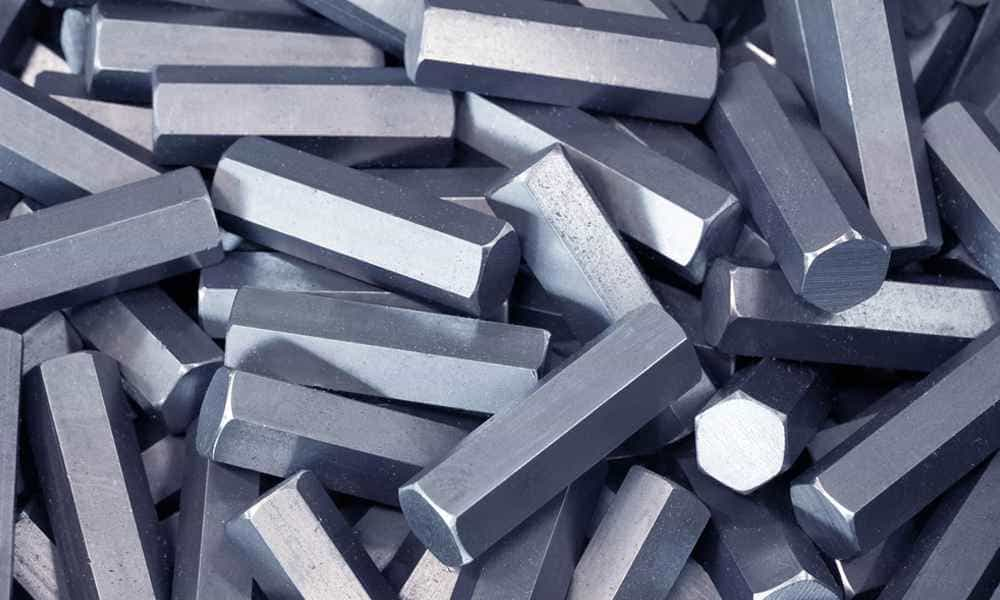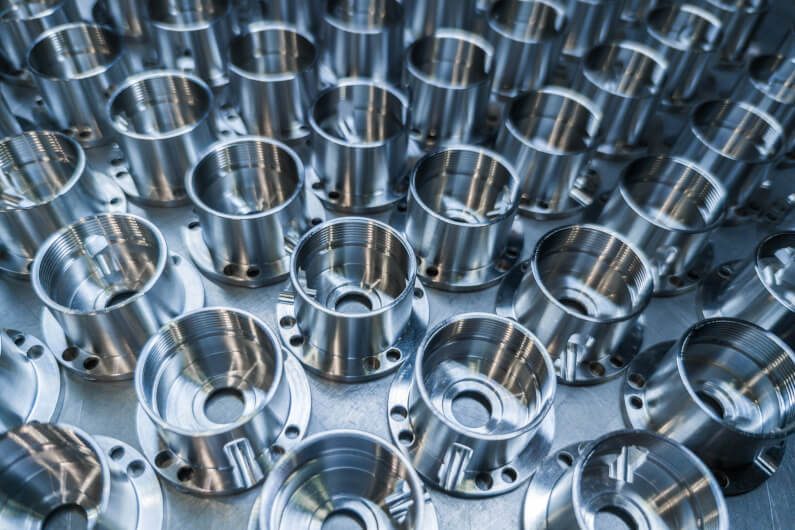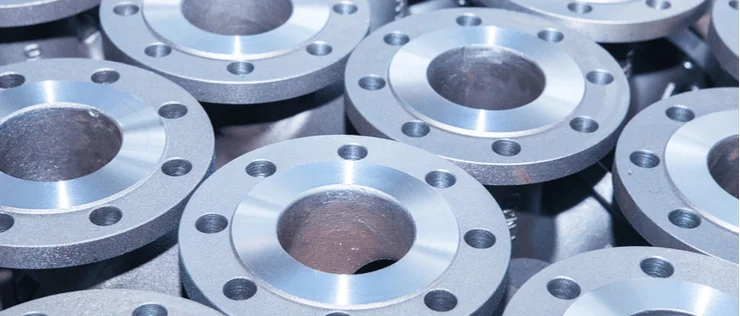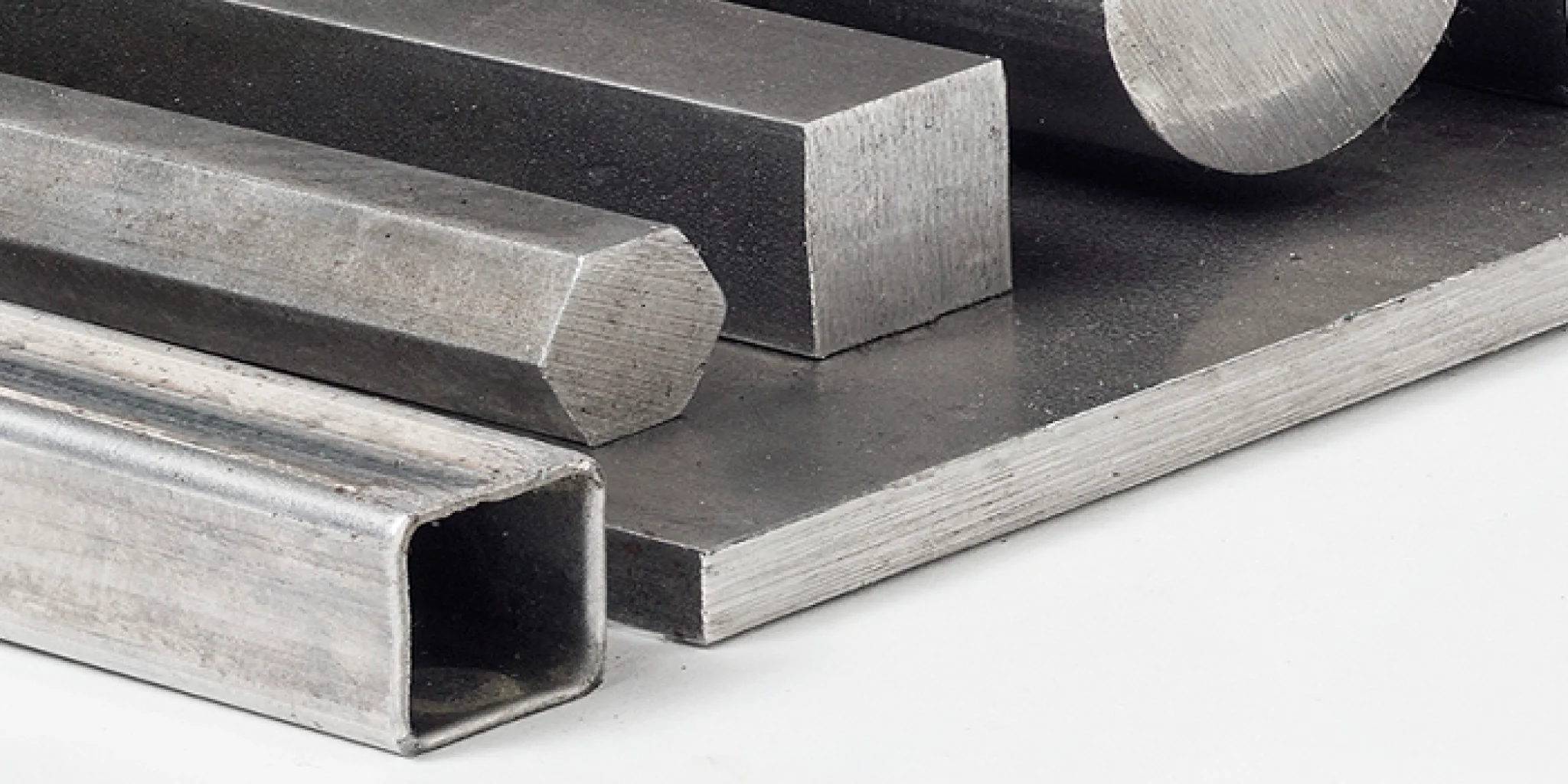Low alloy steel is a type of steel that contains a relatively low percentage of alloying elements, typically less than 8% by weight. Alloying elements are added to steel to enhance its properties, such as strength, toughness, hardness, and corrosion resistance. In contrast to high alloy steels, which contain a significant amount of alloying elements like chromium, nickel, or molybdenum, low alloy steels have a more limited alloy content. Common alloying elements found in low alloy steels include manganese, silicon, copper, and phosphorus, among others.
The primary advantage of low alloy steel is its ability to provide improved mechanical properties without the high cost associated with high alloy steels. By carefully selecting and controlling the alloying elements, manufacturers can tailor the properties of low alloy steel to meet specific requirements for various applications. This makes low alloy steel a versatile material that is widely used in industries such as construction, automotive manufacturing, aerospace, and structural engineering. Its combination of strength, durability, and cost-effectiveness makes it a popular choice for a wide range of structural and industrial components.
Low alloy steels can be further categorized into different classes based on their specific alloying elements and properties, making them suitable for a variety of applications where a balance between cost and performance is essential.
C72900, a copper alloy, is sometimes incorporated as an alloying element in low alloy steels to enhance their properties, expanding their utility in various industries.
Strength and Toughness: Key Characteristics of Low Alloy Steel

Strength and Toughness: Key Characteristics of Low Alloy Steel
Strength and toughness are two key characteristics that make low alloy steel a popular choice in a wide range of industrial applications. These properties are essential for ensuring the reliability and performance of structural and mechanical components.
Strength: Low alloy steels are known for their exceptional strength, which is primarily attributed to the presence of alloying elements like manganese, silicon, and copper. These elements contribute to the formation of fine-grained microstructures within the steel, increasing its tensile and yield strength. This heightened strength allows low alloy steel to withstand heavy loads, making it suitable for use in the construction of bridges, buildings, and heavy machinery. In applications where high-stress levels are a concern, low alloy steel’s superior strength provides a reliable and safe solution.
Toughness: In addition to strength, toughness is another crucial characteristic of low alloy steel. Toughness refers to the ability of a material to absorb energy and deform without fracturing. Low alloy steels are engineered to exhibit excellent toughness, even in challenging conditions. This makes them suitable for applications where impact resistance and resistance to fatigue and crack propagation are critical, such as in the manufacturing of pressure vessels, pipelines, and structural components subjected to dynamic loads. The combination of strength and toughness ensures that low alloy steel can endure harsh operating environments without compromising its structural integrity.
Overall, the balance between strength and toughness makes low alloy steel a versatile material that can meet the demanding requirements of various industries, from construction and transportation to energy production and manufacturing. Its ability to maintain its structural integrity under heavy loads and adverse conditions is a testament to its reliability and suitability for a wide array of applications.
Types and Categories of Low Alloy Steel
Low alloy steel encompasses a wide range of materials that are classified into various types and categories based on their specific alloying elements and properties. Here are some of the common types and categories of low alloy steel:
- High-Strength Low Alloy (HSLA) Steel: HSLA steel is designed to provide high strength while maintaining good weldability and formability. These steels typically contain small amounts of alloying elements such as niobium, vanadium, titanium, and copper. HSLA steels are used in automotive components, structural applications, and as a cost-effective alternative to higher alloyed materials.
- Weathering Steel: Weathering steel, often known by its trade name Corten, is a type of low alloy steel designed to develop a protective rust layer when exposed to atmospheric conditions. This rust layer not only enhances the material’s corrosion resistance but also gives it a distinctive appearance. Weathering steel is commonly used in outdoor sculptures, architectural structures, and bridges.
- Nickel-Chromium-Molybdenum Steels: These low alloy steels contain nickel, chromium, and molybdenum as key alloying elements. They offer excellent corrosion resistance, making them suitable for applications in aggressive environments like chemical processing, oil and gas production, and marine industries. One well-known example is 9% nickel steel, used for cryogenic applications due to its low-temperature toughness.
- Tool Steels: Tool steels are low alloy steels with specific alloying elements like tungsten, molybdenum, and vanadium, designed for use in cutting tools, dies, and molds. They are prized for their hardness, wear resistance, and ability to retain sharp edges, making them indispensable in the manufacturing and machining industries.
- Chrome-Moly Steel: This type of low alloy steel contains chromium and molybdenum and is commonly used in applications like pressure vessels, boilers, and pipelines. Its combination of strength, corrosion resistance, and high-temperature stability makes it ideal for withstanding the demands of these industrial applications.
These are just a few examples of the types and categories of low alloy steel. Each type is engineered to meet specific performance requirements, and the selection depends on factors such as the intended application, environmental conditions, and cost considerations. The versatility of low alloy steel allows it to be tailored to a wide range of industrial needs while maintaining a favorable balance between performance and affordability.
Applications in Structural Engineering

Applications in Structural Engineering
Low alloy steel plays a vital role in structural engineering, where the combination of strength, toughness, and other desirable properties makes it a preferred material for various applications:
Bridges and Buildings: Low alloy steel is commonly used in the construction of bridges and buildings due to its high strength and durability. Its ability to withstand heavy loads and resist deformation makes it an ideal choice for structural components like beams, columns, and reinforcement bars. In seismic-prone areas, where structural integrity during earthquakes is crucial, low alloy steel’s superior toughness helps ensure the safety of these structures. Additionally, its weldability facilitates the construction process, allowing for efficient and cost-effective assembly of large-scale projects.
Industrial Facilities: Structural engineering often involves designing industrial facilities, such as manufacturing plants, warehouses, and refineries. These environments require materials that can endure harsh conditions, including exposure to chemicals, high temperatures, and heavy machinery. Low alloy steel, with its resistance to corrosion and excellent high-temperature properties, is well-suited for these applications. It can be used for structural members, platforms, and equipment support structures, ensuring the reliability and longevity of these critical infrastructure elements.
Transmission Towers The transmission of electrical power and telecommunications relies on a network of transmission towers and poles. These structures must be able to support heavy cables and equipment while withstanding environmental factors like wind, rain, and ice. Low alloy steel’s combination of strength and durability makes it an excellent choice for constructing these towers, ensuring the stability of power and communication networks.
Infrastructure Rehabilitation: In the renovation and repair of aging infrastructure, low alloy steel is often used to reinforce or replace deteriorating components. Its compatibility with existing structures, high load-bearing capacity, and resistance to corrosion make it an ideal choice for structural upgrades, extending the service life of bridges, buildings, and other critical infrastructure elements.
Low alloy steel is a versatile material that finds extensive use in structural engineering. Its properties, including strength, toughness, corrosion resistance, and weldability, make it a reliable and cost-effective option for a wide range of applications where structural integrity and longevity are paramount concerns. Whether in the construction of new infrastructure or the rehabilitation of existing structures, low alloy steel plays a pivotal role in shaping the modern built environment.
Low Alloy Steel in the Automotive Industry
Low alloy steel is widely used in the automotive industry for a variety of critical components and applications due to its favorable combination of strength, toughness, and cost-effectiveness:
Vehicle Chassis and Suspension: The chassis and suspension systems of automobiles require materials that can withstand the stresses and strains of daily driving. Low alloy steel is a common choice for constructing these components, including frame rails, control arms, and suspension springs. Its high strength helps maintain the structural integrity of the vehicle while ensuring passenger safety and ride comfort. Additionally, low alloy steel’s toughness and resistance to fatigue are essential for withstanding the dynamic loads and vibrations experienced during vehicle operation.
Safety Features: The automotive industry places a significant emphasis on safety, and low alloy steel contributes to this goal. It is used in various safety features such as side-impact beams, crumple zones, and roll cage components. These applications rely on the material’s ability to absorb energy during collisions while protecting occupants. Low alloy steel’s exceptional impact resistance and ductility help enhance vehicle safety by absorbing and dissipating the forces generated during accidents.
Engine and Transmission Components: Low alloy steel is employed in the manufacturing of engine and transmission components like crankshafts, camshafts, and gears. These parts require materials that can withstand high temperatures and mechanical stresses while maintaining dimensional stability. Low alloy steel’s excellent heat resistance and wear characteristics make it suitable for these critical engine and drivetrain components, contributing to the overall performance and longevity of vehicles.
Exhaust Systems: The automotive industry relies on low alloy steel for exhaust systems due to its resistance to corrosion, high-temperature strength, and durability. These qualities are essential in exhaust components that are exposed to hot gases and environmental factors. By using low alloy steel in exhaust systems, manufacturers can ensure that these components have a longer service life and meet emission regulations.
Low alloy steel plays a pivotal role in the automotive industry, contributing to the safety, performance, and reliability of vehicles. Its use in various components ranging from chassis and suspension parts to engine and exhaust components underscores its importance in the manufacturing of modern automobiles.
Aerospace and Defense Applications

Aerospace and Defense Applications
Low alloy steel is vital in aerospace and defense applications due to its ability to meet stringent performance and safety requirements. In aerospace, it is employed in critical aircraft components such as wings, landing gear, and fuselage sections. These parts must be both lightweight and exceptionally strong to withstand the forces encountered during flight. Low alloy steel offers an excellent strength-to-weight ratio, making it ideal for structural elements that require strength without adding excessive weight. Its capacity to maintain structural integrity at high altitudes and in extreme temperature variations is crucial for ensuring the safe operation of aircraft.
The defense sector relies heavily on low alloy steel for applications such as missiles, munitions, and armored vehicles. These materials must endure extreme conditions, including high-speed impacts and explosive forces. Low alloy steel’s high strength and exceptional toughness make it a preferred choice for constructing missile casings, tank armor, and other components that need to resist penetration and deformation. Additionally, it is used in gas turbine engines, where its high-temperature performance and resistance to creep are essential for the efficient and reliable operation of aircraft engines.
In space exploration, where conditions are harsh and unforgiving, low alloy steel is utilized in spacecraft components, launch vehicle structures, and other critical systems. Its ability to withstand space’s extreme conditions, such as radiation, extreme temperatures, and microgravity, is vital for the success and safety of space missions. Overall, low alloy steel plays a pivotal role in aerospace and defense industries, contributing to the performance, safety, and reliability of various systems and equipment.
Low Alloy Steel in Oil and Gas Exploration
Low alloy steel plays a vital role in the oil and gas exploration industry due to its ability to meet the demanding requirements of this sector. In the exploration and extraction of oil and natural gas, equipment and infrastructure are subjected to harsh and corrosive environments, high-pressure conditions, and temperature extremes. Low alloy steel is well-suited to withstand these challenges and is used in various applications:
- Pipelines: Low alloy steel is a preferred material for the construction of pipelines that transport oil and gas over long distances. These pipelines must maintain their structural integrity while being exposed to underground and underwater environments. Low alloy steel offers excellent corrosion resistance, ensuring the long-term reliability of these critical energy transport systems. Moreover, its high strength allows for the transportation of fluids at high pressures, minimizing the need for costly maintenance and repairs.
- Oil and Gas Storage Tanks: Storage tanks used in the oil and gas industry require materials that can resist corrosion and structural fatigue. Low alloy steel is commonly used for constructing storage tanks, ensuring the safe containment of petroleum products and natural gas. Its resistance to corrosion, combined with its high tensile strength, helps prevent leaks and ensures the integrity of storage facilities.
- Drilling Equipment: Low alloy steel is also used in the manufacture of drilling equipment, including drill pipes, casing, and wellhead components. These components operate under extreme conditions, including high pressures and abrasive drilling environments. The material’s high strength and durability are crucial for the efficient extraction of oil and gas resources, reducing the risk of equipment failure during drilling operations.
- Offshore Structures: In offshore oil and gas exploration, where platforms and structures are exposed to saltwater, extreme weather conditions, and aggressive corrosion, low alloy steel is a preferred choice. Its resistance to saltwater corrosion, combined with its strength, allows for the construction of durable and reliable offshore platforms, ensuring the safety of workers and the longevity of the infrastructure.
Low alloy steel is indispensable in the oil and gas exploration industry, providing the necessary strength, corrosion resistance, and durability for critical components and infrastructure. Its performance in demanding environments helps maintain the safety and efficiency of oil and gas operations, making it a cornerstone material in this vital sector.
Corrosion Resistance and Low Alloy Steel

Corrosion Resistance and Low Alloy Steel
Corrosion resistance is an important property in materials, and low alloy steel often exhibits good resistance to corrosion in various environments. This characteristic is particularly valuable in applications where the steel is exposed to moisture, chemicals, or other corrosive agents.
One reason for the corrosion resistance of low alloy steel is the presence of alloying elements that help form protective oxide layers on the surface. For example, elements like chromium, nickel, and copper can enhance the steel’s ability to resist corrosion. Chromium, in particular, is known for its role in creating a passive oxide layer, which acts as a barrier, preventing further corrosion. Stainless steel, a type of low alloy steel with a significant chromium content, is renowned for its exceptional resistance to rust and staining.
Another advantage of low alloy steel in terms of corrosion resistance is its versatility. By adjusting the composition of the alloying elements, manufacturers can tailor low alloy steel to perform well in specific corrosive environments. This adaptability allows engineers to choose the most suitable low alloy steel for a wide range of applications, from construction and transportation to chemical processing and marine structures, where corrosion resistance is a critical consideration
Welding and Fabrication of Low Alloy Steel
Welding and fabrication of low alloy steel involve a series of meticulous steps to ensure the integrity of the final product. Before welding, thorough surface preparation is essential. This involves cleaning the surfaces to be joined to remove any contaminants, which can compromise the quality of the weld. Additionally, preheating the steel to a specific temperature, especially for thicker sections, helps prevent cracking during welding. Proper pre-weld preparation is crucial to achieving strong and reliable welds.
Various welding methods can be employed with low alloy steel, such as shielded metal arc welding (SMAW), gas metal arc welding (GMAW), gas tungsten arc welding (GTAW), submerged arc welding (SAW), and flux-cored arc welding (FCAW). The choice of method depends on factors like the specific alloy composition, steel thickness, and the intended application. Each method has its own set of advantages and limitations, so selecting the most suitable one is vital to ensure the weld meets the required standards and specifications.
Post-weld treatments are often necessary to maintain the desired properties of low alloy steel. Stress relieving, heat treatment, and tempering may be employed, depending on the specific alloy and application. These treatments can reduce residual stresses, improve toughness, and enhance strength and hardness as needed. Furthermore, rigorous testing and inspection procedures, including non-destructive methods like ultrasonic testing and radiographic inspection, are employed to detect any defects in the welds. Destructive testing, such as tensile and impact testing, may also be performed to assess the mechanical properties of the welded joint. These measures ensure that low alloy steel is fabricated and welded to meet the stringent quality and performance requirements of various industries.
Advantages and Disadvantages of Low Alloy Steel

Advantages and Disadvantages of Low Alloy Steel
Advantages:
Low alloy steel offers several advantages that make it a valuable choice in various industries. Firstly, it boasts a remarkable combination of strength and toughness, making it well-suited for applications that require materials to withstand heavy loads, impacts, and dynamic forces. This property is particularly crucial in industries like construction, automotive manufacturing, and aerospace, where structural integrity is paramount.
Secondly, low alloy steel is often more cost-effective than high alloy steels, making it an attractive option for many applications. Its affordability allows industries to achieve the necessary performance levels without incurring excessive material costs.
Additionally, low alloy steel can be engineered to exhibit good corrosion resistance, especially when specific alloying elements like chromium and nickel are incorporated. This corrosion resistance extends its utility in challenging environments, including marine and chemical processing applications.
The versatility of low alloy steel is another notable advantage. Its properties can be tailored to meet specific performance requirements by adjusting the alloy composition, making it a versatile choice for a wide range of applications.
Lastly, low alloy steel is typically weldable using common welding methods, making it easier to fabricate and repair. This weldability is crucial in industries where the assembly and maintenance of components are routine tasks.
Disadvantages:
Despite its advantages, low alloy steel also has its limitations. One of the primary disadvantages is its limited corrosion resistance compared to stainless or high alloy steels. In highly corrosive environments, additional protective measures or coatings may be necessary to prevent deterioration.
Achieving the desired material properties in low alloy steel can be challenging, as it often involves precise control of alloying elements. Complex alloy design can increase production complexity and cost, which may not be suitable for all budgets or industries.
Low alloy steel can become susceptible to brittleness, particularly in low-temperature applications. This potential brittleness requires careful selection and heat treatment to mitigate the risk, especially in scenarios where impact resistance is critical.
Additionally, some applications of low alloy steel may demand regular maintenance to prevent corrosion and ensure long-term performance. This maintenance requirement can add to the operational costs of using this material.
Lastly, the production of low alloy steel can have environmental impacts, including energy consumption and carbon emissions. Therefore, considerations of environmental sustainability are essential when selecting this material for specific applications.
REFERENCES:
Silva, W. D. M., Dulcy, J., Ghanbaja, J., Redjaimia, A., Michel, G., Thibault, S., & Belmonte, T. (2017). Carbonitriding of low alloy steels: Mechanical and metallurgical responses. Materials Science and Engineering: A, 693, 225-232.
Rashid, M. S. (1980). High-strength, low-alloy steels. Science, 208(4446), 862-869.
Lin, Y. C., Zhang, J., & Zhong, J. (2008). Application of neural networks to predict the elevated temperature flow behavior of a low alloy steel. Computational Materials Science, 43(4), 752-758.

